2020
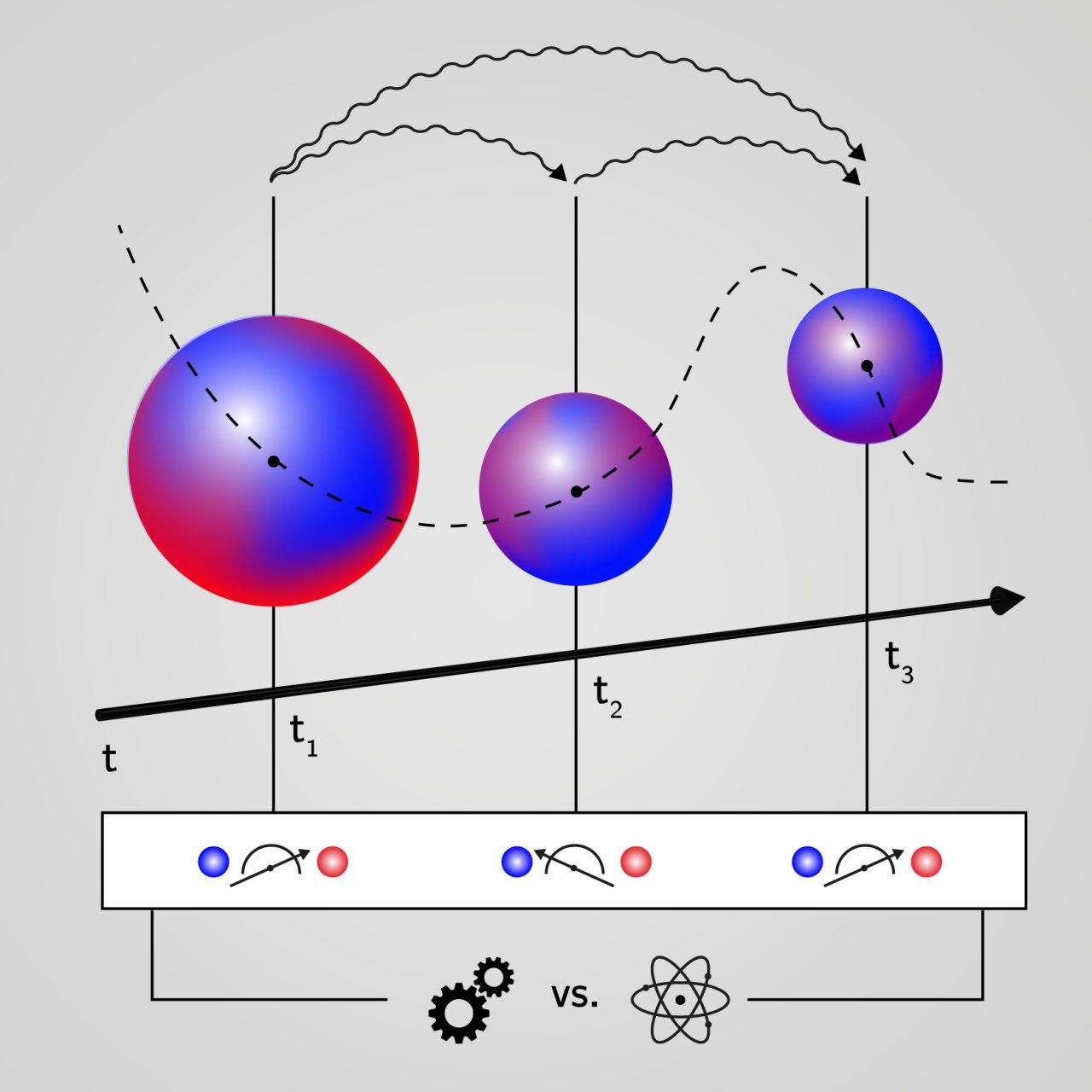
When Is a Non-Markovian Quantum Process Classical?, S. Milz, D. Egloff, P. Taranto, T. Theurer, M. B. Plenio, A. Smirne, and S. F. Huelga, Phys. Rev. X 10, 041049
DOI: https://doi.org/10.1103/PhysRevX.10.041049
Quantum mechanical systems behave in a manner that we rarely experience in our everyday life. Nevertheless, the question of which traits and phenomena are fundamentally quantum is still under active debate. Here, we address it from an operational perspective and focus on the classicality of the outcomes of measurements at different points in time, i.e., on the question if they can be simulated by means of classical statistics. We then fully characterize quantum processes that lead to such statistics if they are probed repeatably with projective measurements. For non-Markovian processes (i.e., processes with memory), the absence of coherence (which is a fundamental quantum trait) does not guarantee the classicality of observed outcomes, which contrasts with the Markovian case. Instead, there exists a direct connection to the vanishing of quantum discord (a nonclassical correlation beyond entanglement) between the probed system and its environment. This allows us to derive an experimentally and computationally accessible measure for nonclassicality in the presence of memory and we show that there exist processes that are genuinely quantum; i.e., they lead to nonclassical statistics independent of the measurement scheme that is employed to probe them.
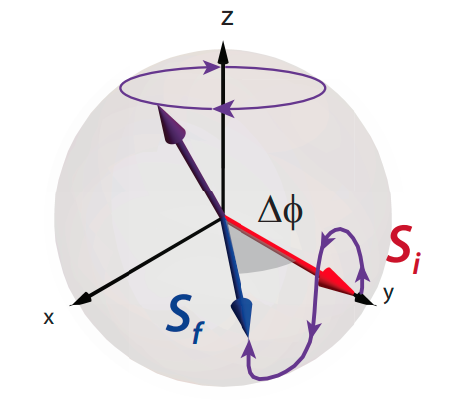
Interplay between geometric and dynamic phases in a single-spin system, A. A. Wood, K. Streltsov, R. M. Goldblatt, M. B. Plenio, L. C. L. Hollenberg, R. E. Scholten, and A. M. Martin, Phys. Rev. B 102, 125428
DOI: https://doi.org/10.1103/PhysRevB.102.125428
It is well known that quantum states acquire a phase under Hamiltonian evolution that depends on their energy. However, in addition to this, the system acquires a phase that depends only on the geometry of its path in the Hilbert space. This aspect of quantum dynamics came into the spotlight long after quantum theory was widely established, mainly due to the fact that its effect is only observable for time dependent amiltonians or via interference of subsections of the Hilbert space. In this work we apply the latter approach and explore the interplay of geometric and dynamic phases in the spin-1 ground state of a Nitrogen-Vacancy center. We focus on the Aharonov-Anandan geometric phase of a spin-1/2 subspace and show that dynamic and geometric phases can not be fully separated in these scenarios. Therefore, both phases have to be considered when interpreting the dynamics.
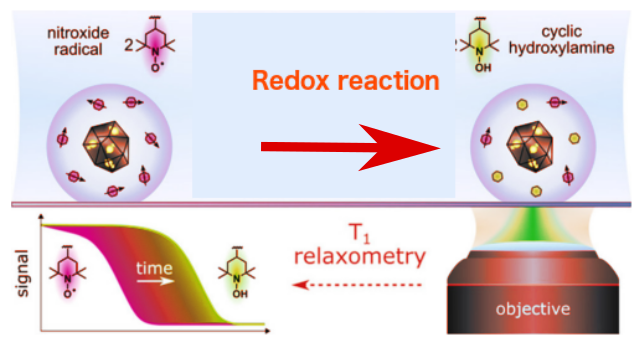
Nanoscale Dynamic Readout of a Chemical Redox Process Using Radicals Coupled with Nitrogen-Vacancy Centers in Nanodiamonds, J. Barton, M. Gulka, J. Tarabek, Y. Mindarava, Z. Wang, J. Schimer, H. Raabova, J. Bednar, M. B. Plenio, F. Jelezko, M. Nesladek, and P. Cigler, ACS Nano 2020, 14, 12938–12950
DOI: doi.org/10.1021/acsnano.0c04010
Oxidation−reduction (redox) reactions is vital in maintaining metabolic and other processes in living cells. For a better understanding of these processes, in this paper we use nitrogen-vacancy (NV) centers inside nanodiamonds as quantum sensors to probe nitroxide radicals with a high spatiotemporal resolution. A higher concentration of nitroxide radicals will cause a shorter NV spin relaxation time, which can be measured by the changes in fluorescence of the NV centers. By doing so, we are able to
trace changes in the nitroxide radicals, revealing information of chemical reactions of the nitroxides. We further show that the scheme can be used dynamically for selective tracing of biologically important redox chemical processes, such as oxidation of ascorbic acid.
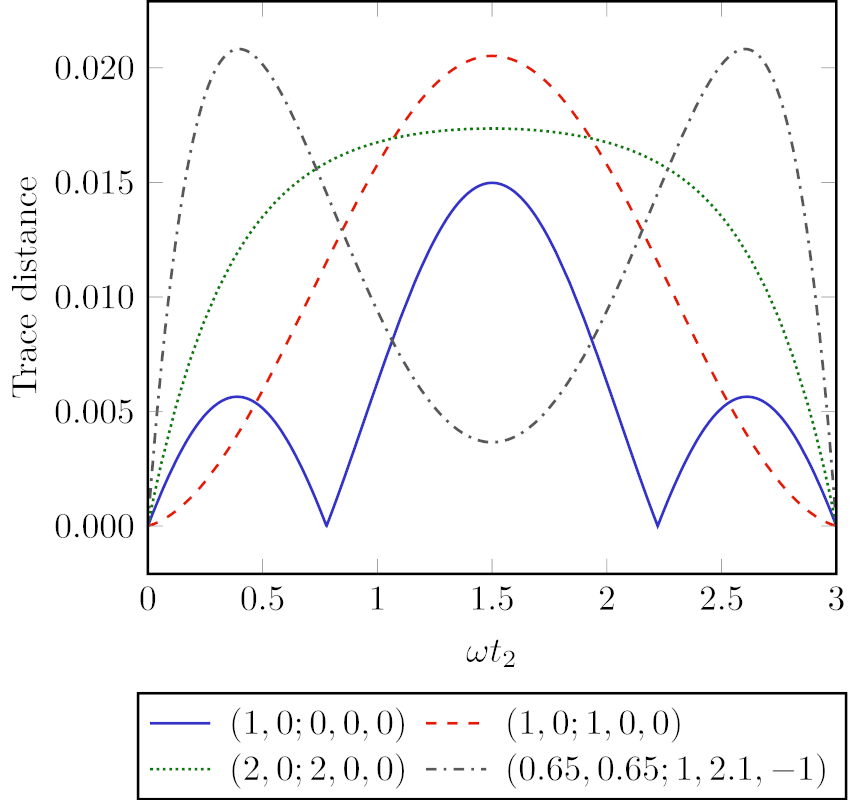
Accessible coherence in open quantum system dynamics, M. G. Díaz, B. Desef, M. Rosati, D. Egloff, J. Calsamiglia, A. Smirne, M. Skotiniotis, and S. F. Huelga, Quantum 4, 249 (2020)
DOI : doi.org/10.22331/q-2020-04-02-249
Quantum coherence was recognized to be a potentially useful resource for a lot of tasks, for example in quantum communication, computation, or metrology. However, the existence of coherence does not per se provide an advantage in any task. We previously introduced the notion of a coherence-generating-and-detecting (CGD) dynamics to capture precisely those situations in which coherence is able to influence measurement outcomes - and which we also showed to be, in certain cases, linked to the question of classicality.
In this paper, we provide necessary and sufficient criteria which allow, in the time-independent case, to easily check, whether a dynamics is CGD based on the Lindblad generator. This makes the conceptually very clear-cut CGD criterion easily computable and allows for a simple analysis of a large class of dynamics.
Giant shift upon strain on the fluorescence spectrum of VNNB color centers in h-BN, S. Li, J.-P. Chou, A. Hu, M. B. Plenio, P. Udvarhelyi, G. Thiering, M. Abdi, and A. Gali, npj Quantum Inf 6, 85 (2020)
DOI: doi.org/10.1038/s41534-020-00312-y
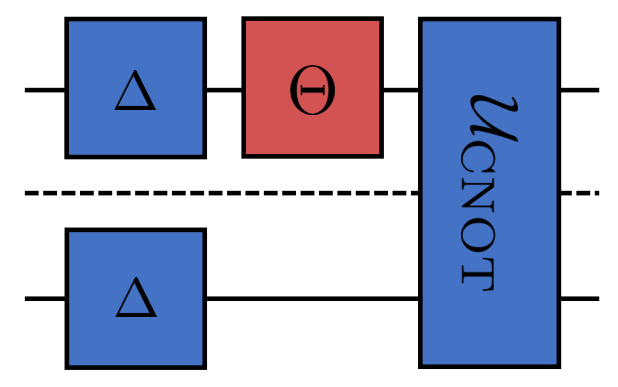
Quantifying Dynamical Coherence with Dynamical Entanglement, T. Theurer, S. Satyajit, and M. B. Plenio, Phys. Rev. Lett. 125, 130401
DOI: doi.org/10.1103/PhysRevLett.125.130401
Coherent superposition and entanglement are two fundamental aspects where quantum physics differs from classical physic. These quantum properties are hence resources for quantum technologies that outperform their classical counterparts. But how are they related? In this work, we provide a quantitative connection between the two on the level of operations by showing that the dynamical coherence of an operation upper bounds the dynamical entanglement that can be generated from it with the help of additional incoherent operations. In case a particular choice of monotones based on the relative entropy is used for the quantification of these dynamical resources, this bound can be achieved. In addition, we show that an analog to the entanglement potential exists on the level of operations and serves as a valid quantifier for dynamical coherence.
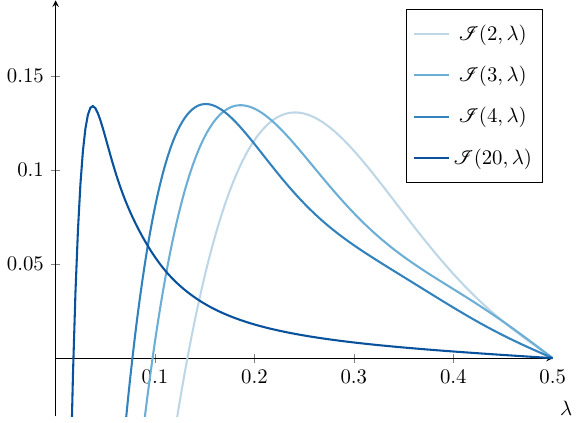
Bosonic Quantum Communication across Arbitrarily High Loss Channels, L. Lami, M. B. Plenio, V. Giovannetti, and A. S. Holevo, Phys. Rev. Lett. 125, 110504
DOI: doi.org/10.1103/PhysRevLett.125.110504
Quantum information is usually thought of as being very fragile. Indeed, transmitting it across long distances is generally a challenging task: the signal mixes with spurious noise coming from the surrounding environment, and the original quantum message is irreparably damaged. Here we change perspective, and show that under certain circumstances quantum communication can be incredibly strong. Namely, we prove analytically that transmitting a quantum message across an optical fibre of arbitrarily low (!) transmissivity is possible at a constant (!) rate, provided that one can tune the environmental state. One could naively think that the best option is to set the environment in a vacuum state (no photons, hence no noise). This strategy does not work, because the message then leaks easily into the empty environment and is lost. Instead, one needs to increase the environment's photon number when the transmissivity decreases. This means that a lot of energy enters the output signal. However, if the environment state is chosen appropriately, counterintuitive quantum effects help make sure that quantum information survives this shower of photons. This "die-hard quantum communication" is utterly unexpected given the range of examples that had been considered up to now.
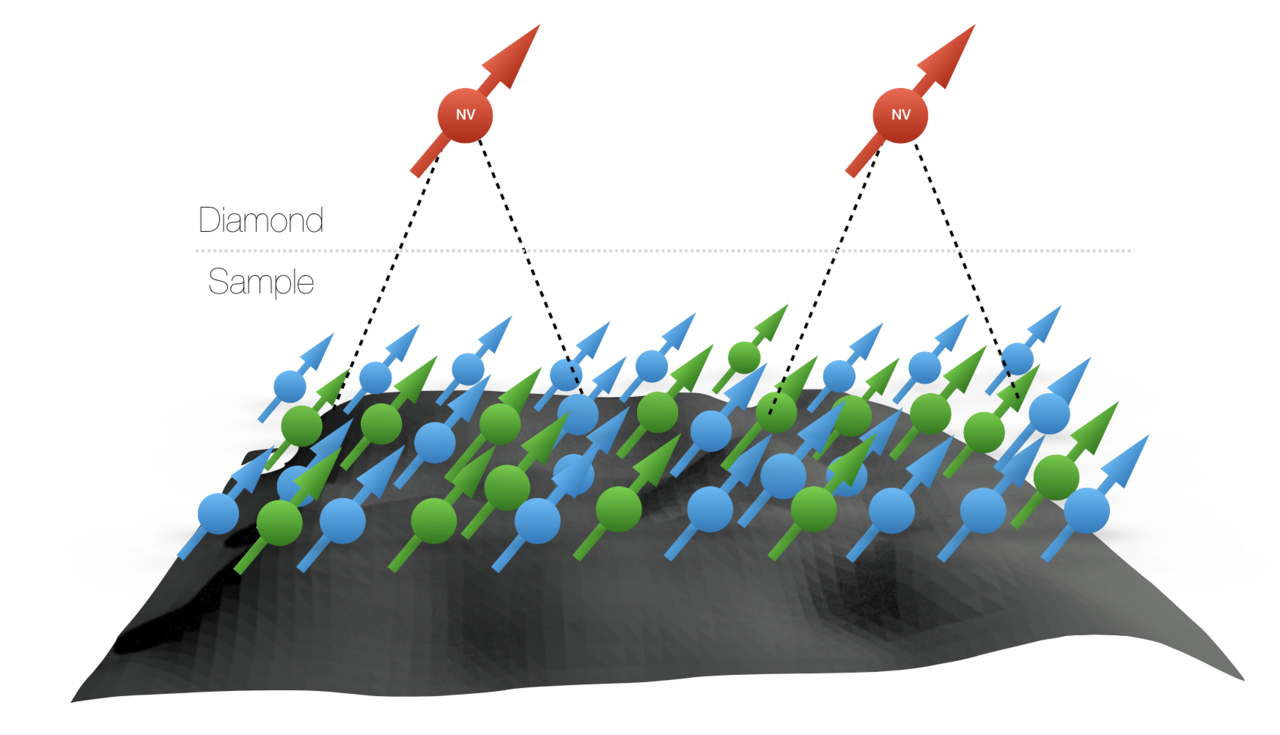
Robustness of the NV-NMR Spectrometer Setup to Magnetic Field Inhomogeneities, Y. Vaknin, B. Tratzmiller, T. Gefen, I. Schwartz, M. B. Plenio, and A. Retzker, Phys. Rev. Lett. 125, 110502
DOI: doi.org/10.1103/PhysRevLett.125.110502
Nuclear magnetic resonance (NMR) allows to obtain information about the structure of molecules. The NV centre in diamond is a promising candidate to detect these NMR signals at the nano scale. Field inhomogeneities, however, are a major source of noise that limits spectral resolution in state-of-the-art NV-NMR experiments and constitutes a major bottleneck in the development of nano scale NMR. In this work we propose and analyse a protocol that is sensitive to frequency differences instead of the individual frequencies and therefore is robust to temporal and spatial inhomogeneities of the magnetic field.
Decoherence-Free Rotational Degrees of Freedom for Quantum Applications, S. Pedernales, F. Cosco, and M. B. Plenio, Phys. Rev. Lett. 125, 090501
DOI: doi.org/10.1103/PhysRevLett.125.090501
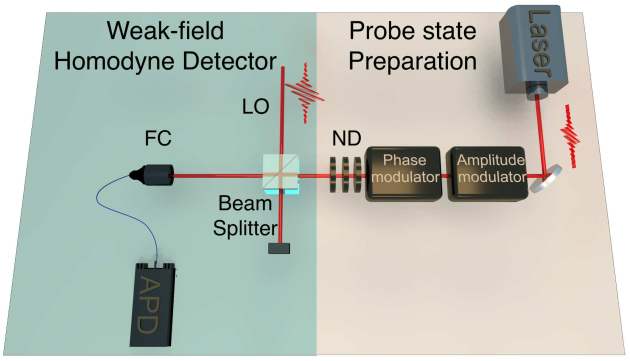
Experimental Quantification of Coherence of a Tunable Quantum Detector, H. Xu, F. Xu, T. Theurer, D. Egloff, Z.-W. Liu, N. Yu, M. B. Plenio, and L. Zhang, Phys. Rev. Lett. 125, 060404
DOI: doi.org/10.1103/PhysRevLett.125.060404
Quantum coherence plays an indispensable role in quantum technology, e.g., in quantum computation, quantum coding and key distribution, and quantum metrology, but also in quantum biology. A prerequisite to exploit coherence so that we can outperform classical counterparts is the ability of measurement devices to detect it from the measurement statistics, or, in other words, we are unable to make use of coherence if we cannot even detect it. Based on a recently developed resource theory of quantum operations, here we quantify experimentally the ability of a typical quantum-optical detector, the weak-field homodyne detector, to detect coherence. We derive an improved algorithm for quantum detector tomography and apply it to reconstruct the positive-operator-valued measures (POVMs) of the detector in different configurations. The reconstructed POVMs are then employed to evaluate how well the detector can detect coherence using two computable measures. These results shed new light on the experimental investigation of quantum detectors from a resource theoretic point of view, lead to insights on the investigated detector, and constitute a proof of principle that resource theories of operations are applicable to complex experimental setups.
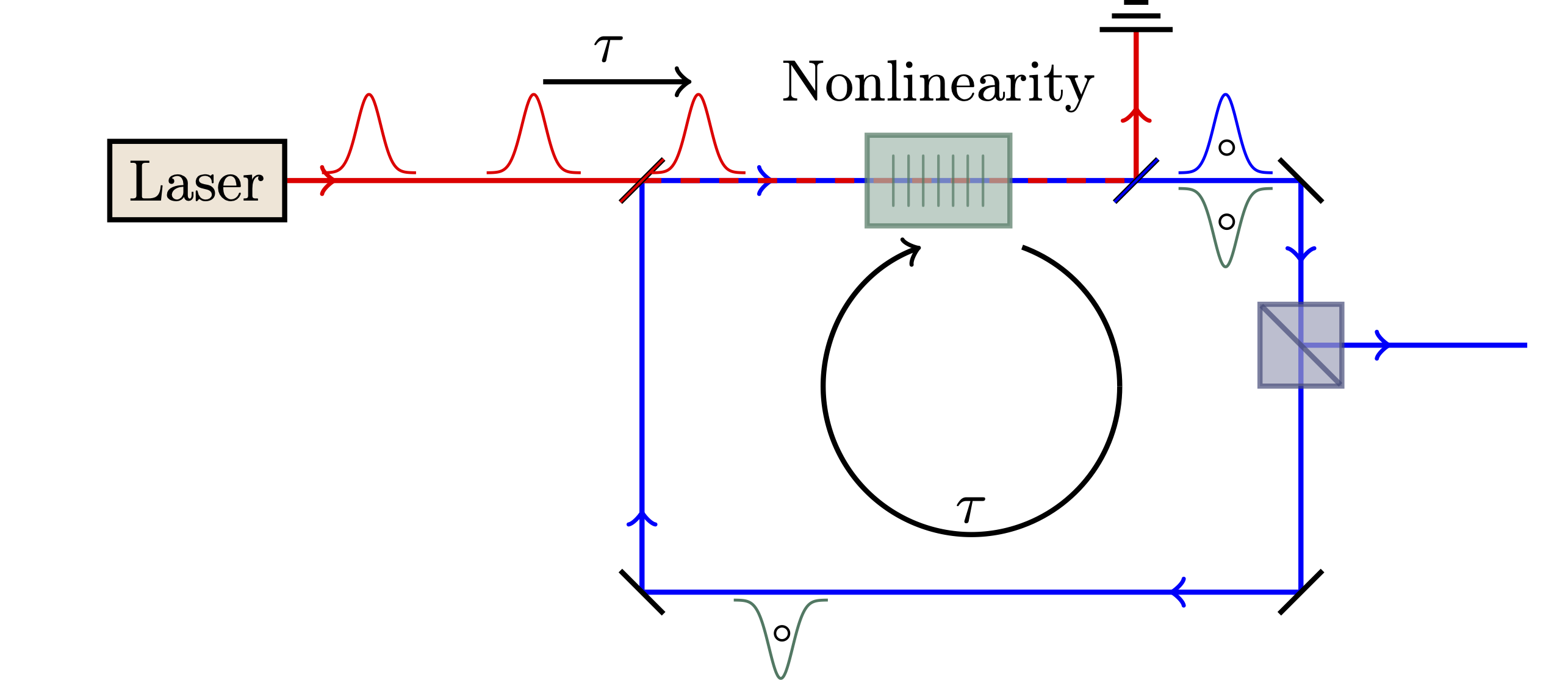
Quantum photonics with active feedback loops, M. Engelkemeier, L. Lorz, Syamsundar De, B. Brecht, I. Dhand, M. B. Plenio, C. Silberhorn, and J. Sperling, Phys. Rev. A 102, 023712
DOI: doi.org/10.1103/PhysRevA.102.023712
Although under normal circumstances light cannot interact with itself, in the presence of a nonlinear optical medium such as special crystals, one photon of light can interact with another. A curious variety of phenomena can be observed by placing non-linear elements in an optical loop that has light circulating in it. However, describing the state of such light has thus far been challenging. This work presents a new framework that allows analysing such a situation. The framework also enables devising interesting applications for such setups, for instance generating states of light that contain a particular number of photons.
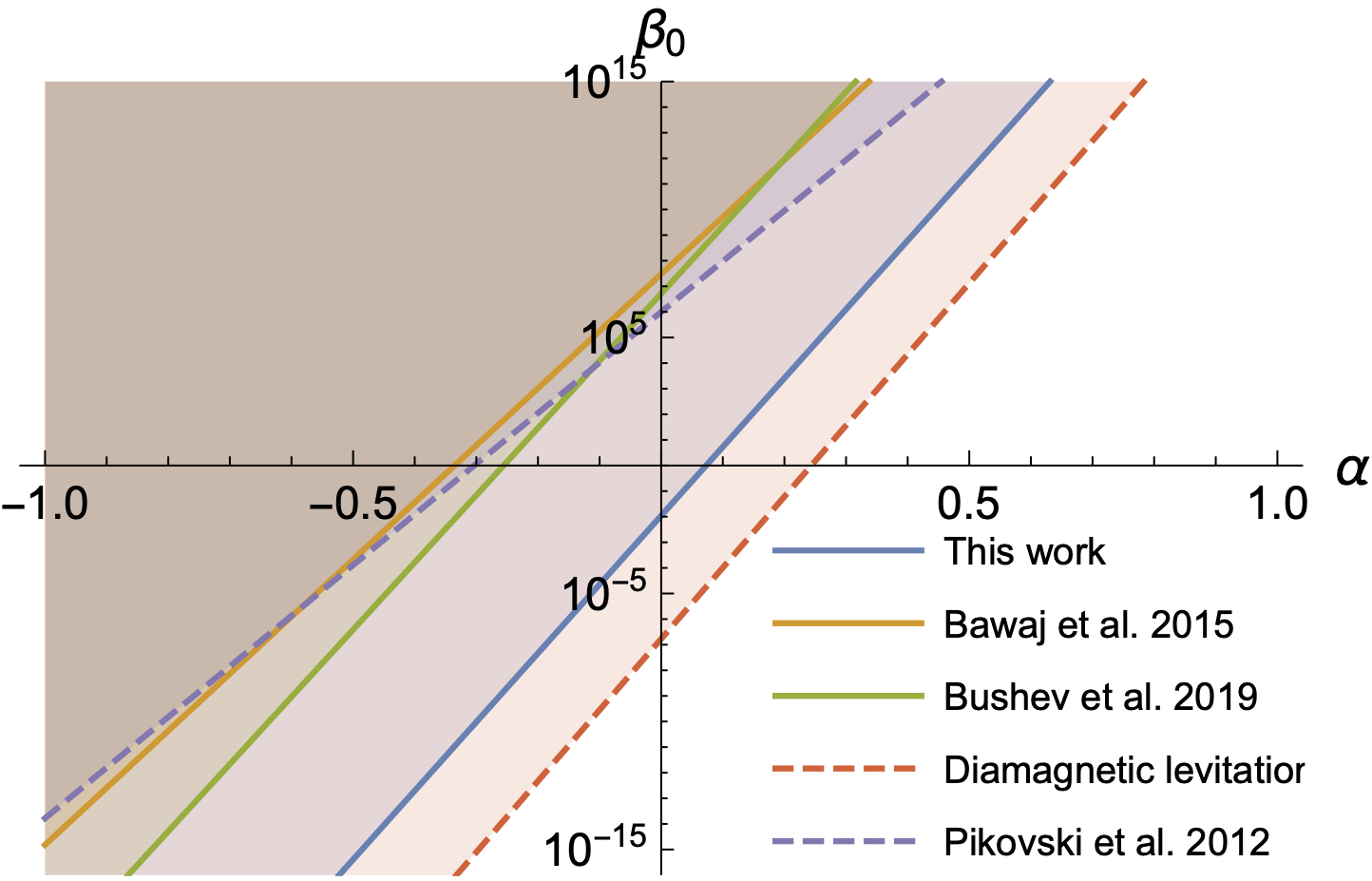
On quantum gravity tests with composite particles, S. P. Kumar and M. B. Plenio, Nature Communications 11 (2020) 3900
DOI: https://doi.org/10.1038/s41467-020-17518-5
Models of quantum gravity imply a fundamental revision of our description of position and momentum that manifests in modifications of the canonical commutation relations. Experimental tests of such modifications remain an outstanding challenge. These corrections scale with the mass of test particles, which motivates experiments using macroscopic composite particles. Here we consider a challenge to such tests, namely that quantum gravity corrections of canonical commutation relations are expected to be suppressed with increasing number of constituent particles. Since the precise scaling of this suppression is unknown, it needs to be bounded experimentally and explicitly incorporated into rigorous analyses of quantum gravity tests. We analyse this scaling based on data from past experiments involving macroscopic pendula, and provide tight bounds that exceed those of current experiments based on quantum mechanical oscillators. Furthermore, we discuss possible experiments that promise even stronger bounds thus bringing rigorous and well-controlled tests of quantum gravity closer to reality.
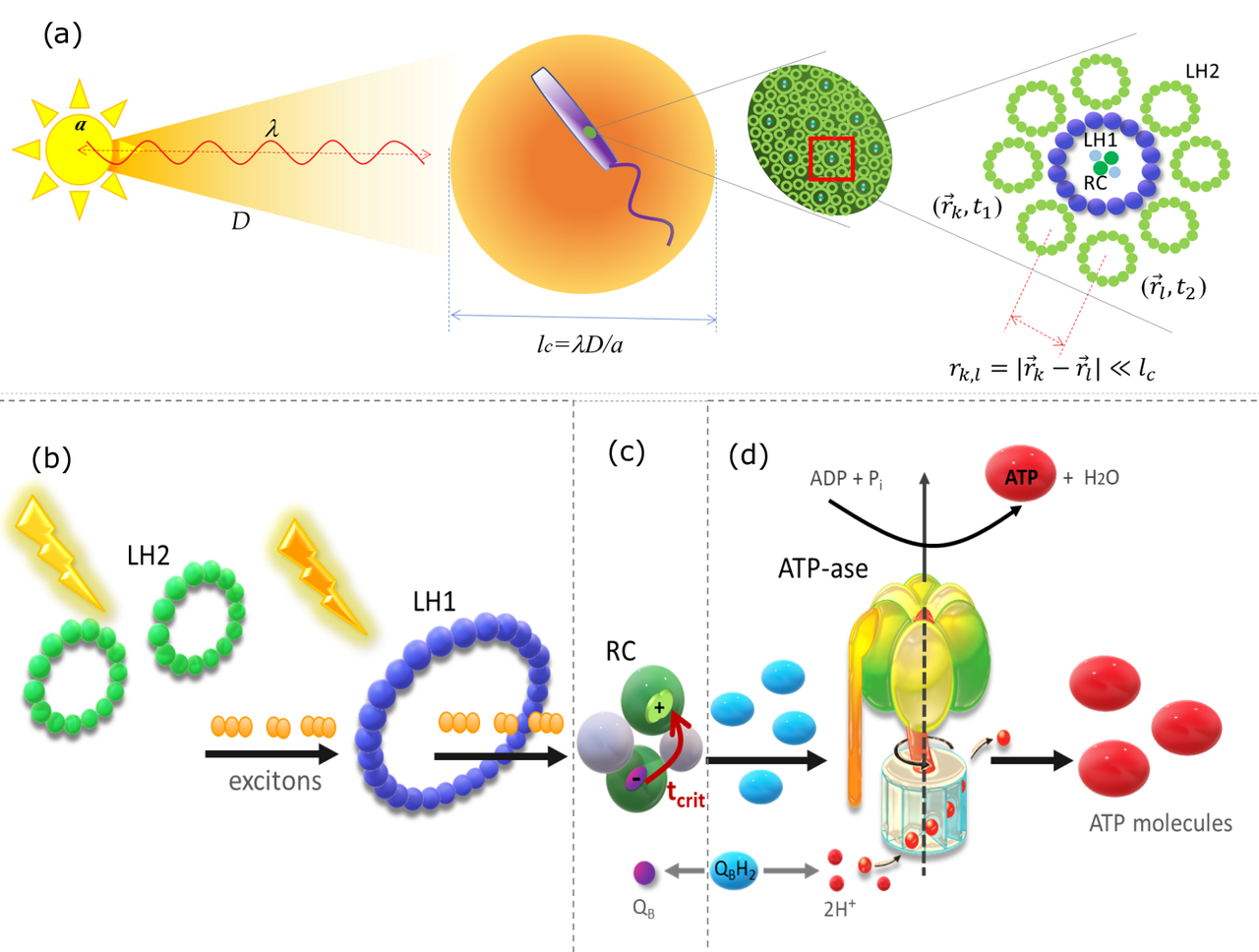
Temporal correlations of sunlight may assist photoprotection in bacterial photosynthesis, A. M. De Mendoza, F. Caycedo-Soler, S. F. Huelga, and M. B. Plenio, New Journal of Physics 22 (2020) 073042
DOI: https://doi.org/10.1088/1367-2630/ab99e0
Photosynthetic systems adapt and respond efficiently to fluctuations in their light environment. As a result, large photosynthetic yields can be achieved in conditions of low light intensity, while photoprotection mechanisms are activated in conditions of elevated light intensity. In sharp contrast with these observations, current theoretical models predict bacterial cell death for physiologically high light intensities. To resolve this discrepancy, we consider the three stages of photosynthesis in natural conditions, namely light absorption, exciton transfer, and charge separation dynamics. The thermal light absorption at the antenna complexes is characterized by photo-bunching, which in turn, is partially maintained until the reaction centers after transport. There, finite charge recombination times lead to energy dissipation because of the gaps between the bunches of excitations arrivals. The dissipated excitations never get to induce Quinol production and the acidity across the membrane can be adjusted to safe values for the cell, depending on the Spatio-temporal correlations of the absorbed light. Our approach allows us to identify a mechanism of bacterial photoprotection that relies on the sunlight photon-statistics.
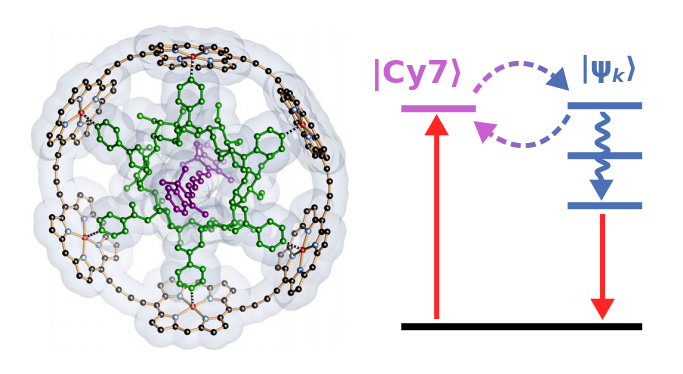
A Complex Comprising a Cyanine Dye Rotaxane and a Porphyrin Nanoring as a Model Light‐Harvesting System, J. Pruchyathamkorn, W. J. Kendrick, A. T. Frawley, A. Mattioni, F. Caycedo‐Soler, S. F. Huelga, M. B. Plenio, and H. L. Anderson, Angewandte Chemie, Int. Ed. 59 (2020) 16455
DOI: https://doi.org/10.1002/anie.202006644
In photosynthetic organisms, right after a photon is absorbed, electronic energy is efficiently transferred from peripheral antenna complexes to the reaction center to be further processed. Studying the absorption and energy transfer mechanism in biological samples can be extremely challenging, due to the presence of highly complex protein structures that bind together the pigments in characteristic geometries. In this work, we present a unique artificial light-harvesting complex, specifically synthesized to reproduce the light-harvesting architecture of purple bacteria. Through a combination of experiments and theoretical modeling, we are able to characterize the picosecond energy transfer dynamics, revealing a mechanism analogous to the one that takes place in the original biological complex. This comparison represents an important step towards bio-mimetic artificial photosynthesis.

Experimental control of the degree of non-classicality via quantum coherence - A. Smirne, T. Nitsche, D. Egloff, S. Barkhofen, S. De, I. Dhand, C Silberhorn, S. F. Huelga and M. B. Plenio, Quantum Science and Technology, 5 (2020) 4LT01
DOI: doi.org/10.1088/2058-9565/aba03
Which predictions of quantum mechanics can and which cannot be reproduced by means of any plausible classical theory? This question is at the basis of upcoming quantum technologies including sensing, computation and communication, and it is central to determine if certain phenomena are genuinely quantum, for instance in biological or thermodynamical systems. Different strategies have been developed to assess the quantumness of physical systems without having to rely on the knowledge of the microscopic details of the system at hand, but rather directly evaluating the probability distributions of the measurement outcomes with respect to specific traits of classical statistics, such as locality, non-contextuality, and measurement non-invasiveness. The latter means that, at least in principle, one can access the value of an observable without altering the statistics associated with its sequential measurements at different times, a property typical of classical statistical theories, which is instead not generally valid in the quantum realm.
Here, we study, both theoretically and experimentally, to what extent non-classicality can be linked with quantum coherence. We show when the coherence of an observable is linearly related to the degree of violation of the Kolmogorov condition, which quantifies the deviation from any classical explanation of the multi-time statistics. Experimentally, we probe this connection in a time-multiplexed optical quantum walk, by comparing the standard statistics, where properties of the walker are measured only at the final step, with the statistic associated with a quantum walk undergoing measurements at an intermediate time [see the figure]. Achieving exquisite control of quantum coherence of the walker by varying the degree of coherent superposition effected by the coin, we show a concomitant variation in the degree of non-classicality of the walker statistics.
Motional Dynamical Decoupling for Interferometry with Macroscopic Particles – J. S. Pedernales, G. W. Morley, and M. B. Plenio, Physical Review Letters, 125, 023602 (2020)
DOI: https://doi.org/10.1103/PhysRevLett.125.023602
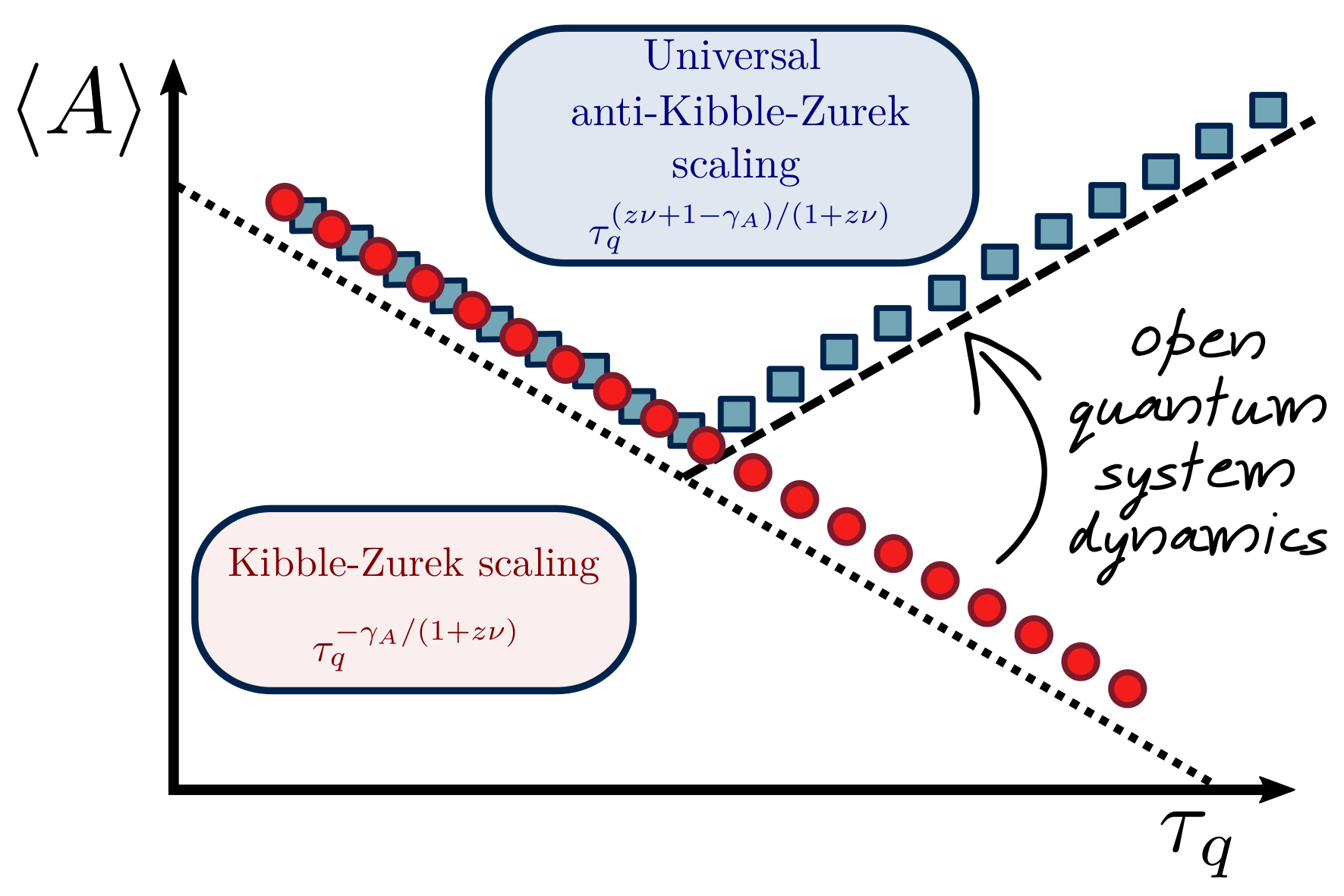
Universal Anti-Kibble-Zurek Scaling in Fully Connected Systems – R. Puebla, A. Smirne, S. F. Huelga, and M. B. Plenio, Physical Review Letters, 124, 230602 (2020)
DOI:https://doi.org/10.1103/PhysRevLett.124.230602
The Kibble-Zurek mechanism dictates a fundamental scaling relation between the equilibrium critical exponents of a phase transition, the quench rate with which the system is driven and the number of nonequilibrium excitations upon traversing the phase transition. In the quantum realm, these universal scaling laws are sensitive to the unavoidable system-environment interaction, i.e. to the open nature of the system dynamics. Such system-environment interaction will typically lead to an anti-Kibble-Zurek behavior: the slower the quench, the more excitations, thus implying a breakdown of the universal scaling relation dictated by the original Kibble-Zurek formulation. However, as we have shown in this work, such anti-Kibble-Zurek behavior can still acquire a universal form: The excitations can increase as a power law of the quench rate, whose exponent is again solely determined by the equilibrium critical exponents of the system’s phase transition. Moreover, all the phenomenology associated to the standard Kibble-Zurek scaling applies here as well, that is, finite-size effects and the non-trivial modification of the power-law exponent under nonlinear drivings towards the phase transition. This constitutes a new phenomenon in the context of nonequilibrium critical dynamics and open quantum systems.
Optimized auxiliary oscillators for the simulation of general open quantum systems – F. Mascherpa, A. Smirne, A. D. Somoza, P. Fernández-Acebal, S. Donadi, D. Tamascelli, S. F. Huelga, and M. B. Plenio, Physical Review A, 101, 052108 (2020)
DOI:https://doi.org/10.1103/PhysRevA.101.052108
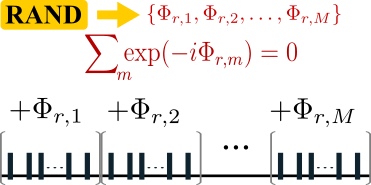
Enhancing the Robustness of Dynamical Decoupling Sequences with Correlated Random Phases – Z. Wang, J. Casanova, and M. B. Plenio, Symmetry 2020, 12, 730 (2020)
DOI:https://doi.org/10.3390/sym12050730
This paper demonstrates that the performance of dynamical decoupling sequences can be improved by imposing correlated random phases to the basic pulse units. These correlated random phases cancel the leading order errors in the basic pulse units such as the static fluctuation in the Rabi frequency and frequency detuning of the control field. Furthermore, these correlated random phases suppress spurious responses, which is due to limited control power and environmental perturbation and can lead to false signal identification in quantum sensing, e.g., the misidentification of carbon nuclei for proton nuclei.
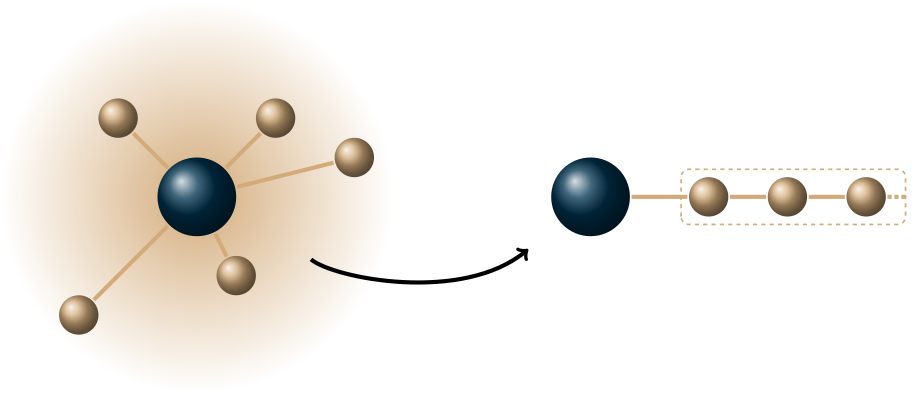
Efficient simulation of open quantum systems coupled to a fermionic bath – A. Nüßeler, I. Dhand, S. F. Huelga, and M. B. Plenio, Physical Review B, 101, 155134 (2020)
DOI:https://doi.org/10.1103/PhysRevB.101.155134
The problem of open quantum systems coupled to fermionic environments arises in a variety of fields ranging from quantum dots to quantum transport at zero and finite temperature. This work presents and analyzes a tensor-network based time integration scheme for this problem, which enables simulations of such systems with controllable and certified error. Furthermore, it is shown that performing simulations in the Heisenberg picture can lead to significant efficiency gains.
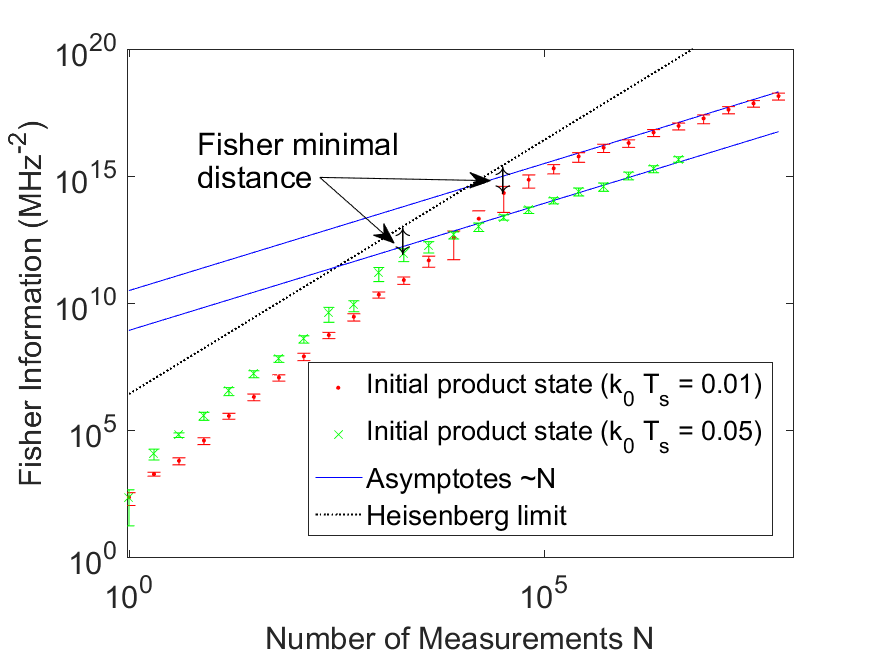
Limited-control metrology approaching the Heisenberg limit without entanglement preparation – B. Tratzmiller, Q. Chen, I. Schwartz, S. F. Huelga, and M. B. Plenio, Physical Review A, 101, 032347 (2020)
DOI:https://doi.org/10.1103/PhysRevA.101.032347
A basic question in quantum metrology is how precise a quantity (e.g. magnetic field strength) can be measured given a number of particles M and a total time T. The ultimate precision limit is the Heisenberg limit, which requires entanglement between the particles involved. In this work we present a scheme that approaches the Heisenberg limit without requiring the preparation of an entangled state by using nuclear spins which are read out by a nearby NV center. We compare the scheme to other approaches and discuss applications.
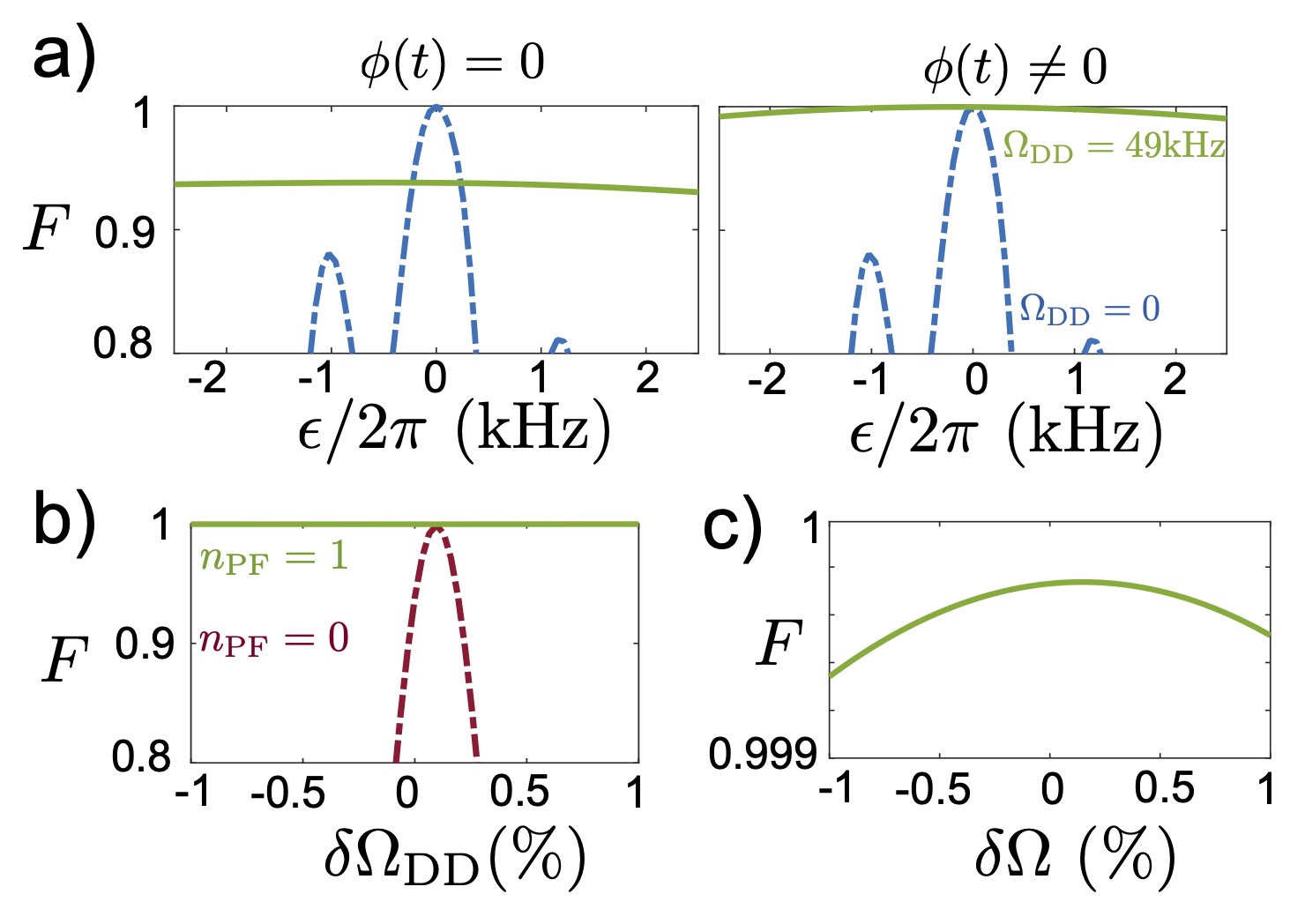
Hybrid Microwave-Radiation Patterns for High-Fidelity Quantum Gates with Trapped Ions – I. Arrazola, M.B. Plenio, E. Solano, and J. Casanova, Physical Review Applied, 13, 024068 (2020)
DOI: doi.org/10.1103/PhysRevApplied.13.024068
Quantum processors based on trapped ions are one of the leading candidates to build quantum simulators and computers, due to their high controllability and long coherence times. Although laser control has been extremely successful achieving high-fidelity quantum gates, the scaling up of these devices requires the precise control of several laser sources, which is a hard technological challenge. Alternatives to laser control that are easier to scale up involve microwave radiation and magnetic field gradients. In this work, we propose microwave radiation patterns that lead to high-fidelity two-qubit gates while being robust against errors in the magnetic or microwave fields. Our method combines continuous dynamical decoupling techniques with phase modulated drivings, phase-flips and refocusing pi pulses, leading to high-fidelity quantum gates in realistic experimental scenarios.
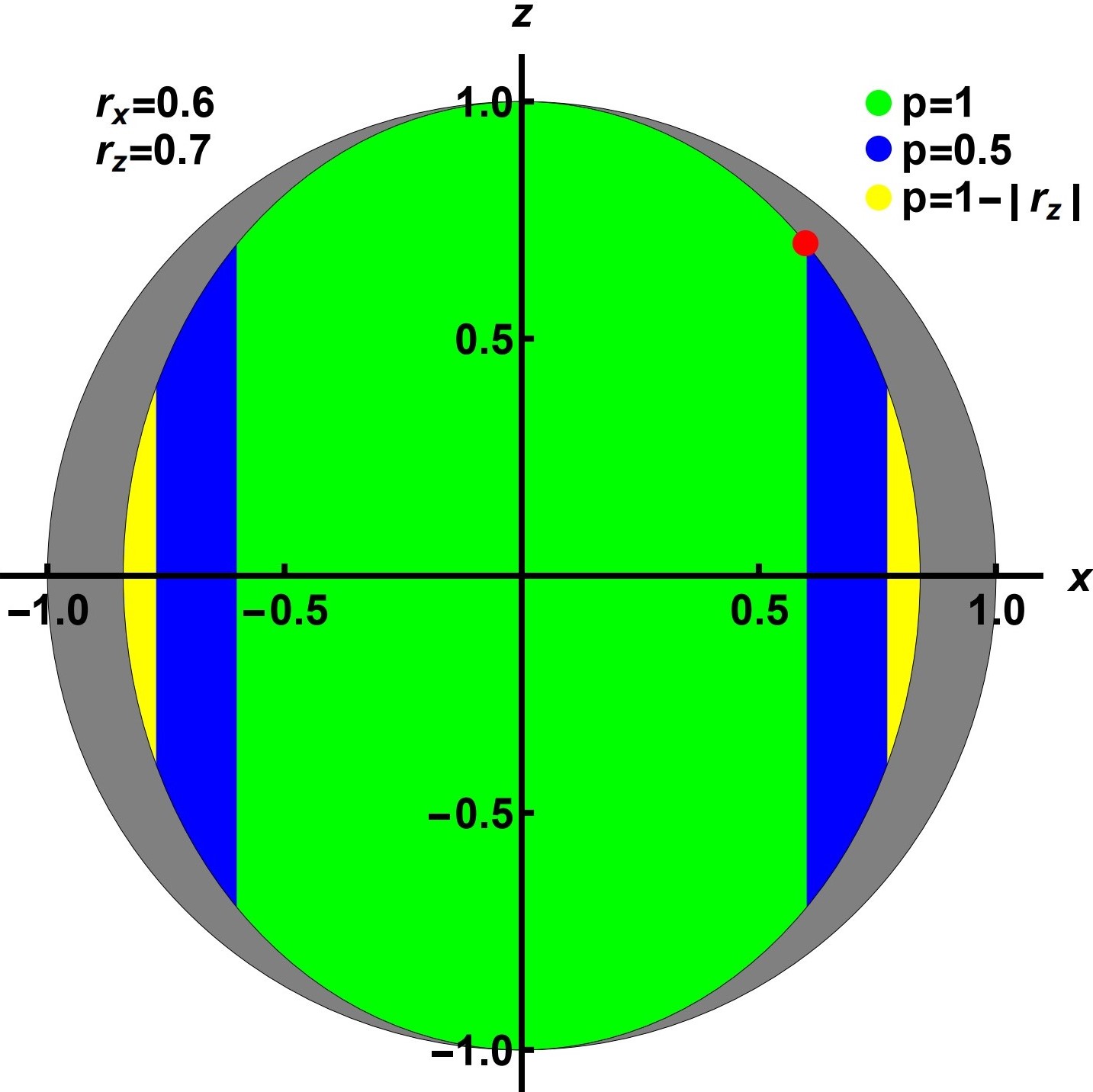
Quantum coherence and state conversion: theory and experiment – K.-D. Wu, T. Theurer, G.-Y. Xiang, C.-F. Li, G.-C. Guo, M. B. Plenio, and A. Streltsov, npj Quantum Information, 6, 22 (2020)
DOI: doi.org/10.1038/s41534-020-0250-z
The resource theory of coherence studies the operational value of superpositions in quantum technologies. A key question in this theory is which resources, i.e., quantum states showing coherence, can be obtained from a given initial state using only operations that are unable to create coherence, so called incoherent operations. This determines the relative value of states for quantum technologies: a state that can be obtained from another one via incoherent operations contains less coherence and is hence less valuable. Here, we solve this question completely for qubit states by determining the optimal single-shot probabilities for mixed-state conversions via stochastic incoherent operations. Extending the discussion to distributed scenarios, we introduce and address the task of assisted incoherent state conversion, where the process is enhanced by making use of correlations with a second party. Building on these results, we demonstrate experimentally that the optimal state-conversion probabilities can be achieved in a linear optics setup. This paves the way towards real world applications of coherence transformations in current quantum technologies.
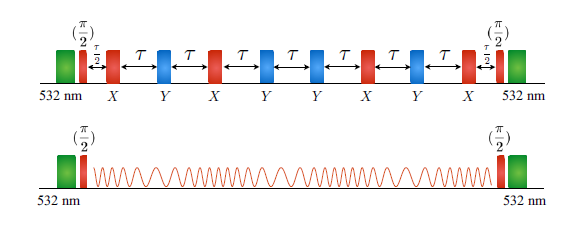
Protecting Quantum Spin Coherence of Nanodiamonds in Living Cells – Q.-Y. Cao, P.-C. Yang, M.-S. Gong, M. Yu, A. Retzker, M.B. Plenio, C. Müller, N. Tomek, B. Naydenov, L.P. McGuinness, F. Jelezko, and J.-M. Cai, Physical Review Applied, 13, 024021 (2020)
DOI: doi.org/10.1103/PhysRevApplied.13.024021
Because of its excellent coherent and optical properties at room temperature, the nitrogen-vacancy (NV) center in diamond, especially when located in nanodiamonds, represents a promising tool for sensing applications in biological environments. However, in nanodiamonds the relatively short NV electron spin coherence times require microwave control to decouple the electron spin of the NV center from its noisy environment. In a biological environment this needs to be achieved with minimal microwave power in order to reduce possible heating effects. Building on earlier work from our group here we demonstrate energy-efficient protection of NV spin coherence in nanodiamonds using concatenated continuous dynamical decoupling. When this is applied to nanodiamonds in living cells, we are able to extend the spin coherence time by an order of magnitude to the T1 limit of 30 μs. Further analysis demonstrates concomitant improvements of sensing performance, which shows that our results provide an important step toward in vivo quantum sensing using NV centers in nanodiamond.
Contact


Ulm University
Institute of Theoretical Physics
Albert-Einstein-Allee 11
D - 89081 Ulm
Germany
Tel: +49 731 50 22911
Fax: +49 731 50 22924
Office: Building M26, room 4117
Click here if you are interested in joining the group.
Most Recent Papers
Efficient Information Retrieval for Sensing via Continuous Measurement, Phys. Rev. X 13, 031012, arXiv:2209.08777
Active hyperpolarization of the nuclear spin lattice: Application to hexagonal boron nitride color centers, Phys. Rev. B 107, 214307, arXiv:2010.03334
Driving force and nonequilibrium vibronic dynamics in charge separation of strongly bound electron–hole pairs, Commun Phys 6, 65 (2023), arXiv:2205.06623
Asymptotic State Transformations of Continuous Variable Resources, Commun. Math. Phys. 398, 291–351 (2023), arXiv:2010.00044
Spin-Dependent Momentum Conservation of Electron-Phonon Scattering in Chirality-Induced Spin Selectivity, J. Phys. Chem. Lett. 2023, 14, XXX, 340–346, arXiv:2209.05323
